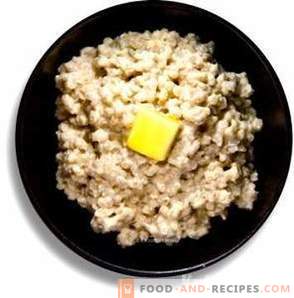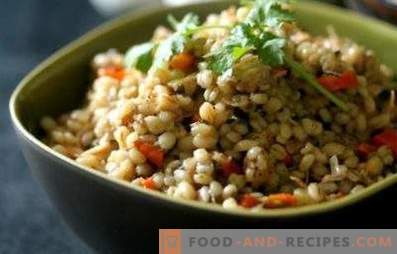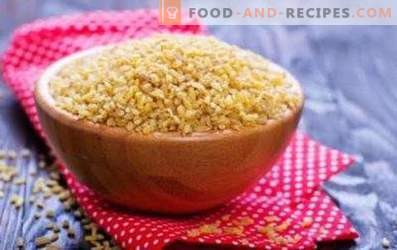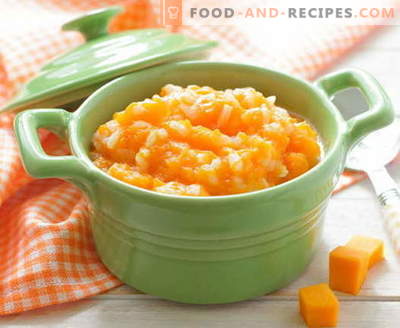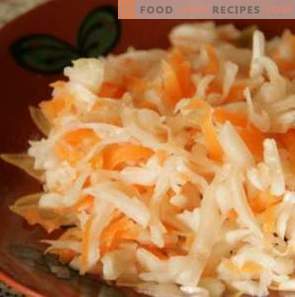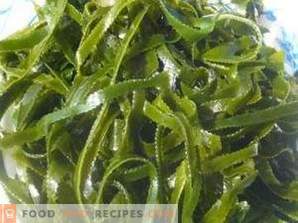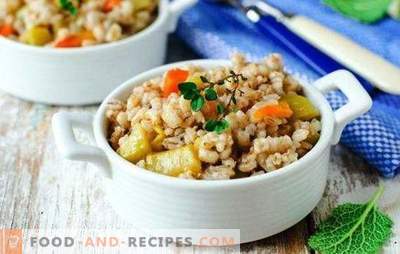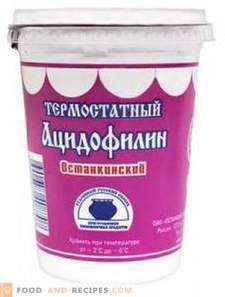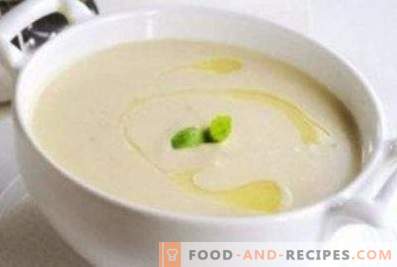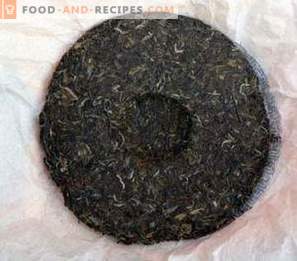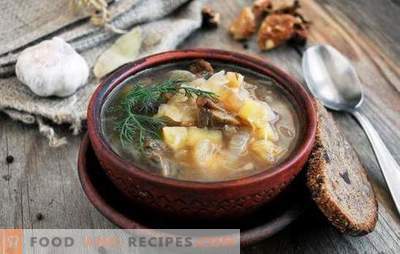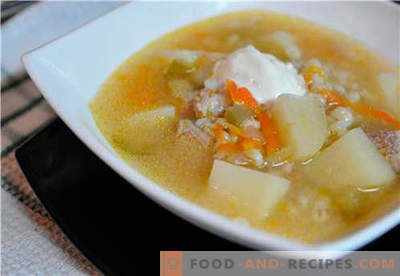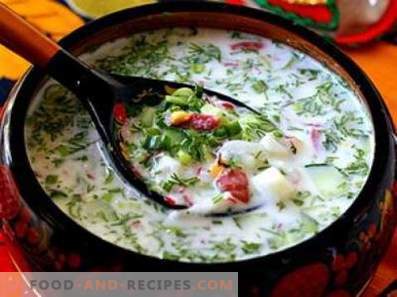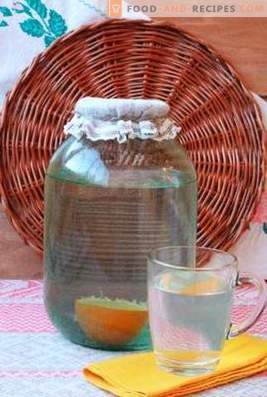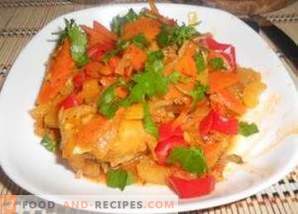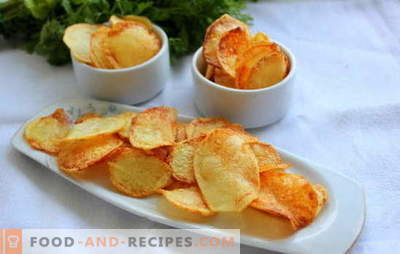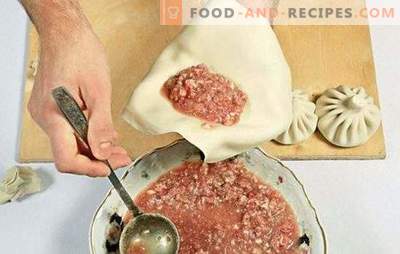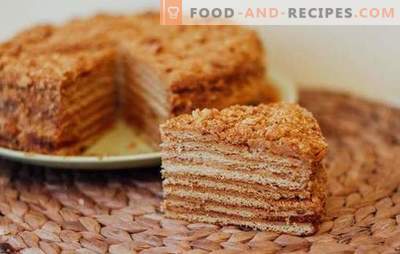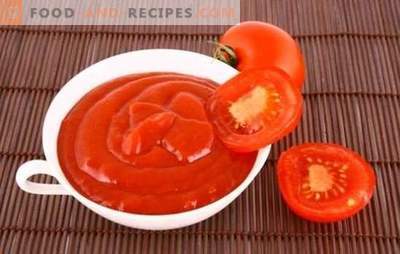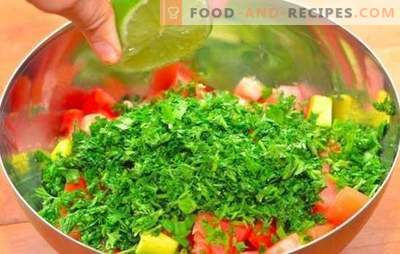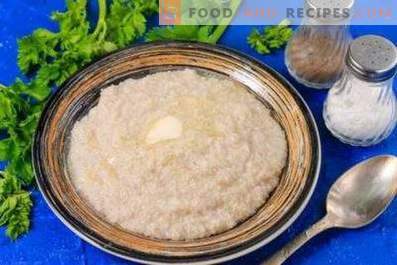
Barley porridge is a simple dish, which is prepared using crushed barley grains. This product contains a whole range of nutrients that are beneficial to the body. However, barley porridge has a number of drawbacks, which far from all people are used to including this dish in their diet.
Recipe for Barley Porridge
For the preparation of delicious, crumbly porridge you need only 3 ingredients: water (800 ml), barley grits (1 cup) and salt. Before cooking, crushed barley grains should be roasted in a dry frying pan for 10 minutes. Further it is necessary:
- Pour water into a saucepan and bring it to a boil over high heat.
- Add salt to taste in boiling water;
- Pour the roasted cereals from the pan into the pan.
- Reduce heat and cook porridge until liquid is completely absorbed and evaporated (about half an hour).
- Remove the pan from the heat, wrap it with a thick towel and let the dish stand for 10-15 minutes.
If desired, water can be replaced with cow's milk. The taste of the finished dish will improve if you add a small piece of butter to it.
Nutritional Value
100 g of barley porridge cooked in water (without butter) contain:
- 2, 098 g of proteins;
- 2, 877 g of fat;
- 15, 249 g of carbohydrates (including starch and dextrins - 14, 107 g, mono- and disaccharides - 1, 142 g);
- 1, 866 g of dietary fiber;
- 76, 588 g of water;
- 1, 114 g of ash.
The concentration of saturated fatty acids in the composition of the dish is 0.595 g per 100 g.
Vitamins in the composition of the dish
Barley porridge is an affordable source of B vitamins. 100 g of the finished dish contains:
- thiamine (B1) - 0, 059 mg;
- Riboflavin (B2) - 0, 017 mg;
- choline (B4) - 8, 164 mg;
- pantothenic acid (B5) - 0, 029 mg;
- pyridoxine (B6) - 0, 112 mg;
- folic acid (B9) - 6, 388 mkg.
In addition, the barley porridge contains vitamins E (tocopherol equivalent), K (phylloquinone) and PP (nicotinic acid). The concentration of these compounds in 100 g of the finished product is 1, 101 mg, 0, 412 μg and 1, 317 mg, respectively.
Useful items
Macronutrients in 100 g barley porridge:
- potassium - 50, 133 mg;
- calcium - 19, 764 mg;
- magnesium - 13, 688 mg;
- sodium - 3, 781 mg;
- sulfur - 20, 104 mg;
- phosphorus - 85, 746 mg.
Trace elements per 100 g dishes:
- iron - 0, 448 mg;
- cobalt - 0, 521 mkg;
- manganese - 0, 187 mg;
- zinc - 0, 261 mg;
- copper - 92, 387 mkg;
- molybdenum - 3, 244 mcg;
- selenium - 9, 424 mkg;
- fluorine - 22, 318 mkg.
Calories of barley porridge
In 100 g of barley porridge cooked in water, contains 76, 106 kcal. The energy value of the same portion of the dish, cooked in milk, is 112, 377 kcal. Caloric content of dry barley groats - 323, 794 kcal per 100 g.
Useful properties of the dish
- Porridge made from barley grits on water without added oil has a relatively low energy value. Therefore, people who want to lose weight may occasionally include this dish in the diet menu.
- Dietary fiber, which is rich in this product, accelerates metabolic processes, prevents stagnation in the intestine, prevents food fermentation in the gastrointestinal tract.
- Proteins and “slow” carbohydrates make barley porridge useful for athletes and people leading an active lifestyle. The substances contained in this dish contribute to the restoration of the body after prolonged illness, surgical interventions in the area of the stomach and intestines, exhausting labor, increased physical and mental stress.
- Crushed barley porridge is rich in compounds that accelerate the excretion of toxins, poisons and salts of heavy metals.
- Regular consumption of this dish contributes to strengthening the heart muscle, reducing the permeability of blood vessels and reducing the concentration of “harmful” cholesterol in the blood. This minimizes the risk of developing cardiac pathologies.
- Vitamins and minerals contained in barley groats help to increase immunity, increase the body’s resistance to infectious diseases and colds.
- The dish contains tocopherol and other substances with antioxidant properties. Thanks to them, the destructive effect of free radicals on healthy cells is neutralized, the risk of the formation of tumor neoplasms is reduced and the processes causing the gradual aging of tissues are slowed down.
- Useful nutrients entering the body when using barley porridge have a beneficial effect on the condition of hair and nails, preventing their fragility, accelerating their growth and giving them a healthy shine. People who are used to including this dish in their diet rarely suffer from alopecia and seborrhea.
- Vitamins of group B, with which this product is rich, create conditions for the normal functioning of the nervous system and prevent failures in its work. Using barley porridge 2-3 times a week, you can eliminate problems with falling asleep, improve mood and performance, get rid of unwarranted anxiety and irritability, prevent the development of neuroses and depressions, minimize the negative impact of stress and psycho-emotional upheavals on the body.
- In traditional medicine, undercooked barley grits are used to make warm cough compresses.
- Porridge made from crushed barley is recommended for people suffering from urolithiasis. Studies have shown that this product contains substances that can break down stones and facilitate their elimination from the body.
- Gordetsin, a compound with fungicidal properties, was found in barley porridge. Therefore, this dish is useful for people suffering from fungal diseases.
- Regular consumption of barley dishes has a positive effect on the condition of the skin. It is proved that the substances present in their composition, accelerate the production of elastin and collagen, activate cell regeneration, help smooth fine wrinkles, give the skin velvety and radiance. In addition, they normalize the work of sweat glands and reduce the risk of developing dermatological diseases.
- Barley porridge enhances intestinal peristalsis and enhances the production of digestive enzymes. Therefore, this dish is often recommended for people suffering from chronic constipation.
- The product has moderate diuretic properties, prevents the spread of inflammatory processes in the body, activates the gallbladder.
- It has been established that barley croup contains substances possessing antihistamine properties. Dishes from it are useful to persons prone to the development of allergic reactions.
- Porridge made from barley cereals contains a complex of nutrients necessary for the normal functioning of the reproductive system in men and women. With its frequent use, the results of spermograms for men improve, the menstrual cycle is normalized for women, the potency and the probability of a successful conception increase. In addition, the substances contained in this product, weaken the unpleasant symptoms of menopause in women.
- Barley porridge contains useful elements that protect the visual apparatus from the negative influence of external factors and increase visual acuity.
- The dish contains substances that can relieve pain in arthritis and other diseases of the joints.
- Regular inclusion of crushed barley porridge in the menu helps to normalize the functions of the thyroid gland and prevent the development of endocrine disruption.
- Barley grits are included in the treatment menu for diabetes, hypertension, hemorrhoids.
Use of barley porridge for children
- Barley porridge contains a whole range of substances necessary for full growth, rapid weight gain, proper development of the internal organs and body systems in a child.
- Compounds present in the composition of this product improve mental activity, help children to better absorb learning material.
- Phosphorus, which is rich in barley porridge, contributes to the proper formation of bone tissue. Children who regularly use this dish, significantly reduced the risk of rickets, dental diseases.
- Porridge from barley grits contains substances with anti-inflammatory and antimicrobial properties. Therefore, this dish is necessary for children who adapt to visiting preschool institutions.
Contraindications and harm of barley porridge
- Nutritionists recommend eating barley porridge for food no more than 3 times a week.
- Dishes made from barley kernels can provoke allergic reactions. Therefore, people who have previously been identified food allergies, should be cautiously include them in the diet.
- Porridge made from barley grits, cooked in milk with added butter, is not a dietary product. Abuse of this dish can cause obesity.
- Barley porridge is contraindicated for persons suffering from inflammatory bowel or stomach diseases.
- People who have been diagnosed with celiac disease (gluten enteropathy) should completely eliminate this dish from the menu.
- Nutritionists do not recommend barley porridge to pregnant women. The composition of this product contains substances that can provoke preterm labor.
- Abuse of barley cereal can cause digestive disorders, stool disorders (diarrhea), flatulence.
- Pediatricians prohibit the introduction of this dish into the diet of children under the age of 12 months.
- It is not recommended to combine barley porridge and egg whites in one meal.
